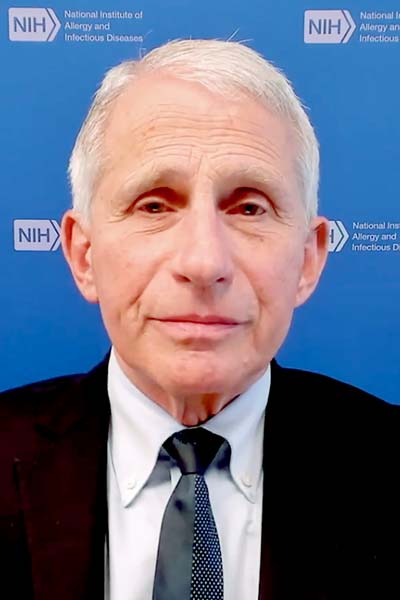Antiretroviral therapy has transformed the lives of people living with HIV since a puzzling group of cases, the first in what would become the AIDS pandemic, was reported more than 40 years ago in Los Angeles.

Anthony S. Fauci, MD, director of the National Institute of Allergy and Infectious Diseases, National Institutes of Health, highlighted the “spectacular advances” in the science of HIV/AIDS and ongoing challenges of this disease during the President’s Symposium on Monday morning, May 16.
“The development of highly effective antiretroviral therapy for HIV, undoubtedly, is one of the most important biomedical research advances of our era, taking a disease that was almost certainly a death sentence to one in which individuals can now lead essentially normal lifespans,” he said.
There are 13 single-tablet once-daily antiretroviral regimens with approval from the U.S. Food and Drug Administration. Earlier this year, the FDA also approved Cabenuva (cabotegravir and rilpivirine), an extended-release ART administered by injection every four weeks.
However, that progress is tempered by disparities and implementation gaps in testing and treatment, accessibility, durability of viral suppression, “as well as the ever-present human rights issue, including stigma and discrimination,” Dr. Fauci said.
There is a clear global disparity of cases, he noted. Of the nearly 38 million people living with HIV worldwide, more than 20 million are in Eastern and Southern Africa, with another 5 million in Western and Central Africa. North America and Western and Central Europe account for a combined 2 million cases.
Within the U.S. there is a regional disparity of cases as well, with the highest rate of new infections in the South.
HIV prevention has evolved over the past four decades. HIV pre-exposure prophylaxis is about 99 percent effective with optimal and consistent use. And even though about a quarter of eligible patients in the U.S. are prescribed PrEP, coverage varies widely, Dr. Fauci said. More than 60 percent of white patients have coverage, but only 14 percent of Hispanic and Latino patients and 8 percent of Black patients do.
The success of the COVID-19 vaccine has opened up new potential in the quest to eliminate HIV.
“A number of studies have now launched vaccine trials with the new platform of mRNA. Hopefully this will bring us forward in this quest for a safe and effective vaccine for HIV,” Dr. Fauci said.
A Department of Health and Human Services initiative aims to reduce the number of new HIV infections in the U.S. by 90 percent within the next decade.
“I believe this is a feasible goal, but the only way we can do that is to make sure that we continue to get scientific advances, but also that those scientific advances are properly and appropriately implemented in an equitable manner,” Dr. Fauci said.
Also during the President’s Symposium, Laurence Huang, MD, ATSF, University of California, San Francisco, explained the global burden of HIV. Engi Farouk Attia, MD, MPH, University of Washington, traced the evolution of pulmonary manifestations with HIV. Krishna P. Reddy, MD, MS, Massachusetts General Hospital, discussed threats to survival posed by smoking among patients with HIV. Janice Leung, MD, St. Paul’s Hospital, Vancouver, Canada, offered insights into the mechanisms and future directions of HIV-associated lung disease.
Extend Your Learning Beyond San Francisco with ATS 2025 Conference Highlights

With so many valuable educational opportunities offered during the ATS 2025 International Conference, attendees are often forced to decide which sessions to prioritize. That’s why the Society is offering three ATS 2025 Conference Highlights packages for those unable to attend ATS 2025 San Francisco or attendees interested in continuing their education after the conference. Check out the packages and pick the one that’s right for you. Learn at your own pace, whenever and wherever you are!

